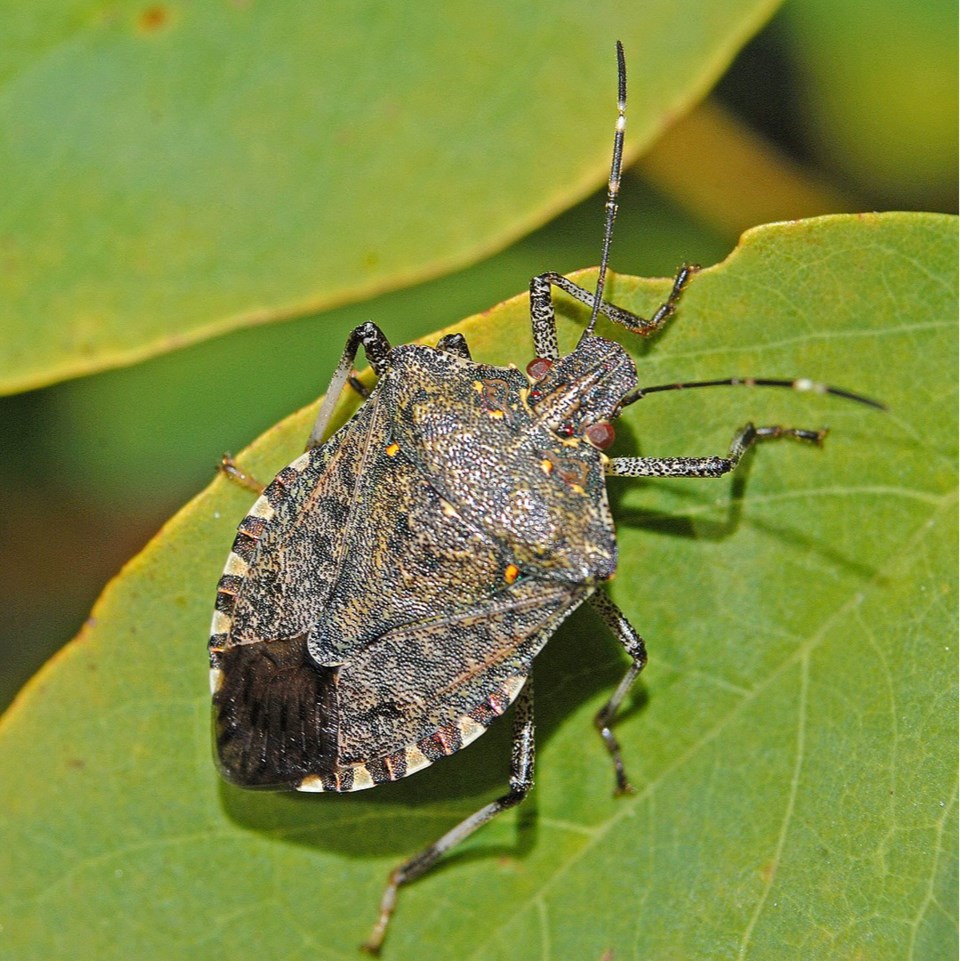If you have recently discovered a strange flat arrowhead-shaped bug in your house, you're not alone. These uninvited guests are an invasive species popping up in and around homes across the province.
They're called the brown marmorated stink bug and last fall (2022) the B.C. government issued a and declared them a public nuisance.
Many people are under the impression that they are an autumnal issue and are surprised to see them again now that the weather is warming. There's a reason for that.
Metro Â鶹´«Ã½Ó³»pest expert Mike Londry explains, that fall is the time the bugs come inside to overwinter in the walls of your home and spring is when they emerge.
Stink bugs have a tendency to cluster around window frames in large numbers and leave droppings and when people try to sweep them away, they produce unpleasant-smelling oils that stain furniture and hands which is very hard to clean off.
How to get rid of the bugs in your home
"Spring/summer they are hanging out mostly in shady foliage that could include anywhere in the yard and nearby areas," says Londry. They're also attracted to fruit trees. He recommends keeping bushes and trees trimmed back or, better yet, away from the house entirely to minimize the risk of them collecting around your perimeter.
The B.C. government has put together a pamphlet on once they are in your house and advises sealing off access points to prevent them from entering. They do not recommend the use of insecticides in the home as a method of control.
For those households that are being swarmed, the website suggests combining two cups of hot water, one cup of vinegar, and one cup of dish soap in a spray and applying it to windows, door frames, and the outside of the home weekly.
They also recommend vacuuming up the bugs with a nylon stocking in the hose of the vacuum to catch the bug and then tying the nylon with the bug inside and drowning it in soapy water. A loose stink bug in your vacuum can leave a very strong smell. When crushed or threatened the bugs will release an unpleasant odour but they don't bite people.
Alternatively, the bugs can be caught with homemade traps such as a pan of soapy water with a desk lamp above or a 2-litre pop bottle and a battery-powered light inside.
How to identify the bugs
Brown marmorated stink bugs are native to Asia though have been in North America since 2001. Feeding on 100 different plant species, this particular stink bug has been wreaking havoc on agricultural industries in the U.S. It was estimated that the bugs caused $37 million worth of damage to the mid-Atlantic States' apple industry back in 2010.
They were first detected in low numbers in B.C. in 2015, in urban areas the bug population was mostly contained to the Fraser Valley, Vancouver, Â鶹´«Ã½Ó³»Island, and the Okanagan with the largest number present in downtown Kelowna.
Now, as the problem grows, the B.C. government wants people to send pictures of sightings or even samples to the Ministry of Agriculture offices. There are three other species of stink bugs that may be confused for our new invasive friends but the brown marmorated can be identified by the orange markings on either side of its spine all the way down its back.
There are also images on the B.C. government website to help distinguish between bugs.



